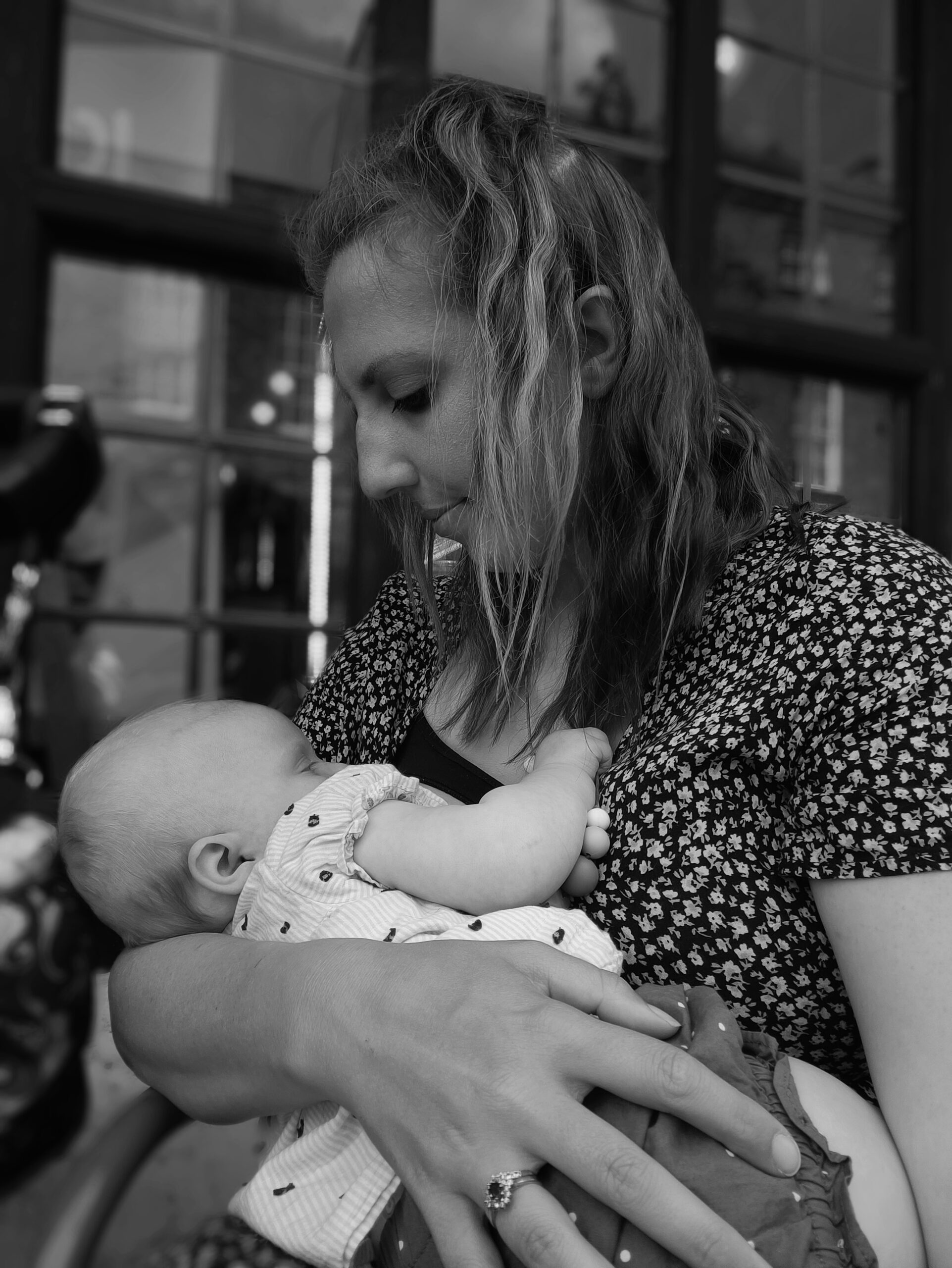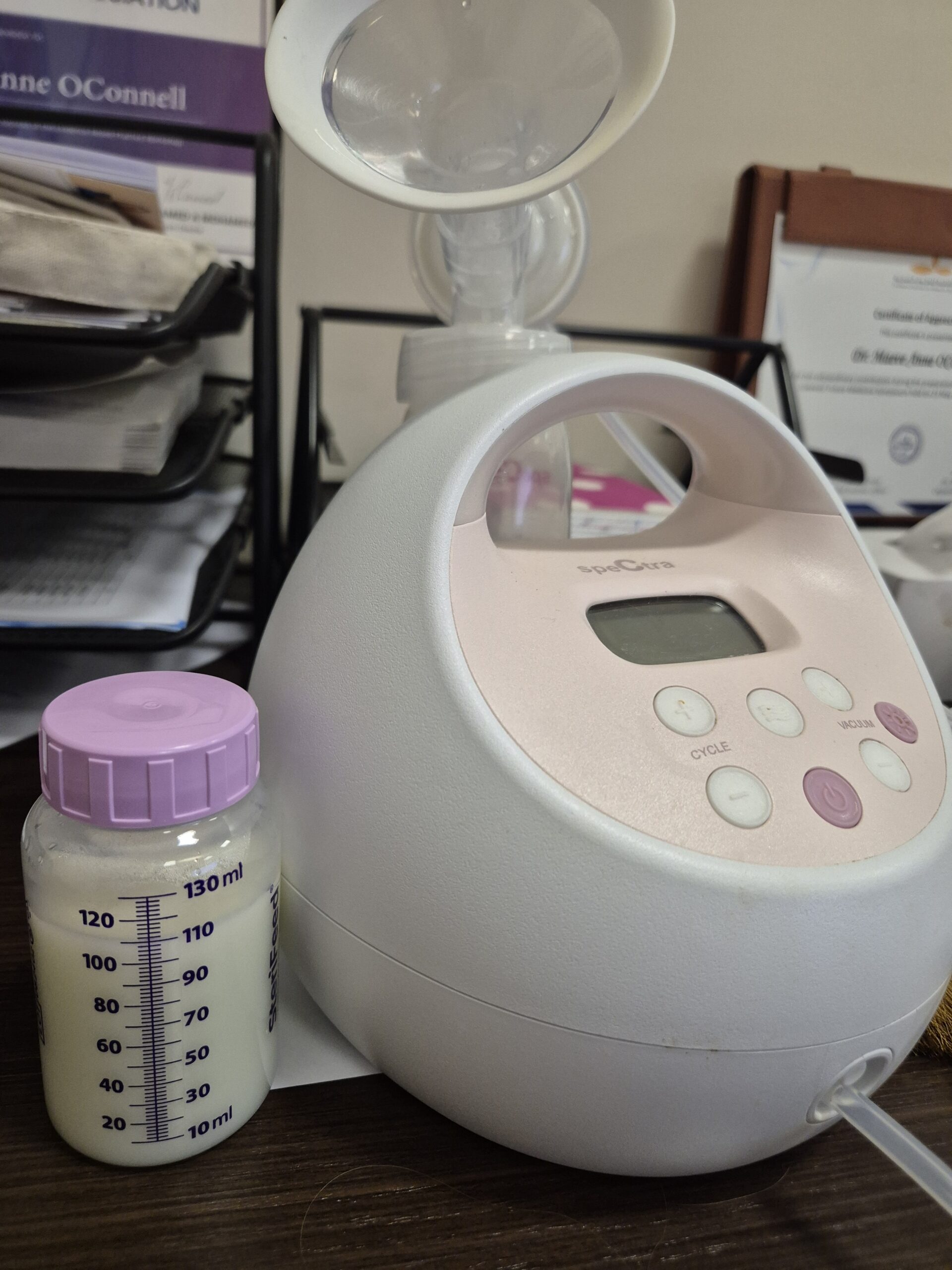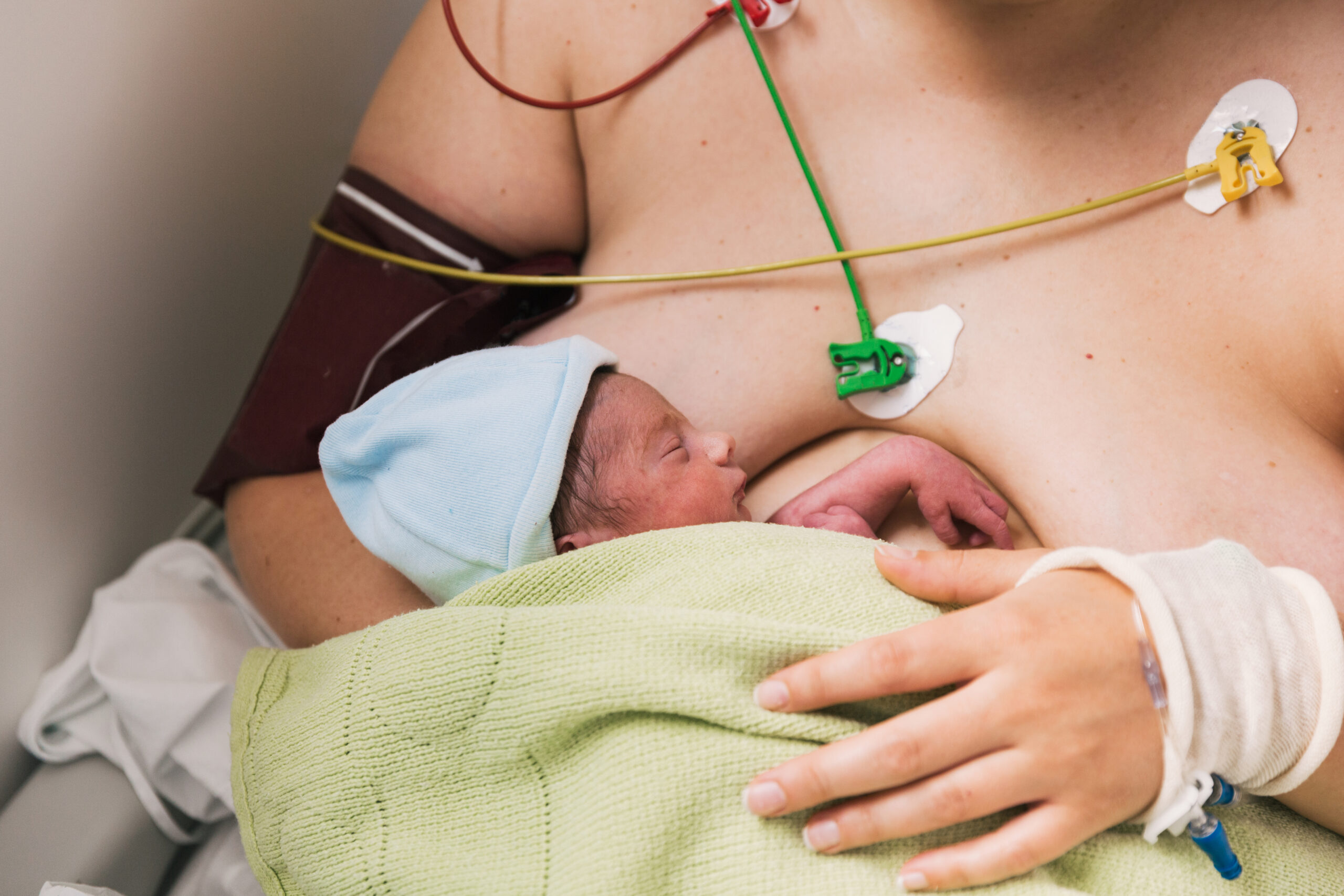Each year, Ireland’s National Breastfeeding Week (1–7 October) celebrates the power of connection between parent and baby – and this year’s theme, “Hold Me Close: The Power of Skin-to-Skin Contact,” reminds us that some of the most meaningful moments in early parenthood are also the simplest.
Whether it’s those first tender minutes after birth or quiet cuddles weeks later, skin-to-skin contact is more than just a comforting gesture. It’s a powerful biological process that helps both baby and parent adjust, bond, and thrive.

The Science Behind Skin-to-Skin
Skin-to-skin contact has long been recognised as a cornerstone of immediate postnatal care for healthy newborns. Placing a baby directly onto their parent’s chest helps regulate breathing, heart rate, and temperature, and it encourages early feeding behaviours (Moore et al., 2016).
Placing a baby directly onto their parent’s chest helps regulate breathing, heart rate, and temperature, and it encourages early feeding behaviours
For many years, the focus has been on offering this contact straight after birth – ideally within the first hour, the so-called “golden hour.”
It’s Never Too Late
Importantly, if skin-to-skin was missed in the delivery room, it’s not too late. This simple practice can be revisited throughout the postnatal period and beyond.
For parents, this can be especially helpful when babies are unsettled or when feeding feels challenging. A period of skin-to-skin contact often helps both baby and parent to calm and “reset,” and feeding attempts afterwards are often more successful.
It can also be beneficial after or between feeds, without the pressure of latching – allowing the baby to associate the breast or chest with comfort and safety.
It’s Not Just for Birth Parents
Skin-to-skin contact is not limited to the birthing parent. Partners can provide it too, reaping many of the same regulatory and bonding benefits.
For health professionals, it’s essential to guide families on safe practice: ensuring baby’s airways remain free and parents are in a secure position and environment when holding their infant.

Babywearing and the Power of Close Contact
Close contact can also be continued through babywearing, which provides ongoing opportunities for connection and regulation.
The T.I.C.K.S. guidelines offer a simple framework for safe carrying:
- Tight – keep the sling snug enough to hug baby close.
- In view at all times – baby’s face should always be visible.
- Close enough to kiss – their head should be as close to your chin as is comfortable.
- Keep chin off the chest – to maintain an open airway.
- Supported back – in a natural, upright position.
The Wider Benefits
The benefits of skin-to-skin extend beyond comfort. Research shows that babies who experience it cry less (Anderson et al., 2003). With less crying comes more frequent feeding, which supports milk production and overall breastfeeding outcomes.
Daily skin-to-skin contact during the first five weeks of life in healthy full-term infants has also been shown to promote stability in gut microbiota (Eckermann et al., 2024) – an effect that may be especially beneficial for babies born by caesarean section.
Daily skin-to-skin contact during the first five weeks of life in healthy full-term infants has also been shown to promote stability in gut microbiota
For Preterm Babies: Kangaroo Care
For preterm infants, skin-to-skin contact – often called kangaroo care – can make a profound difference. Studies show it reduces infection risk, supports more stable heart rate and breathing, improves weight gain, and is linked to shorter hospital stays (Conde-Agudelo & Díaz-Rossello, 2016).
Parents of premature babies often say they feel more confident and connected to their baby through kangaroo care, especially during such a vulnerable and uncertain time.
A Simple, Powerful Practice
For parents, it’s reassuring to know that skin-to-skin is a simple, responsive tool that can help babies settle, make feeding easier, and strengthen attachment.
For professionals, it’s a reminder that encouraging and supporting skin-to-skin contact is not only valuable in the first hour of life but also during the first days and weeks after birth – whenever closeness is needed most.
References
- Anderson, G.C., Moore, E., Hepworth, J., & Bergman, N. (2003). Early skin-to-skin contact for mothers and their healthy newborn infants. Cochrane Database of Systematic Reviews.
- Moore, E.R., Bergman, N., Anderson, G.C., & Medley, N. (2016). Early skin-to-skin contact for mothers and their healthy newborn infants. Cochrane Database of Systematic Reviews.
- Eckermann, H.A., Meijer, J., Cooijmans, K., Lahti, L., & de Weerth, C. (2024). Daily skin-to-skin contact alters microbiota development in healthy full-term infants.
- Conde-Agudelo, A., & Díaz-Rossello, J.L. (2016). Kangaroo mother care to reduce morbidity and mortality in low birthweight infants. Cochrane Database of Systematic Reviews.



















